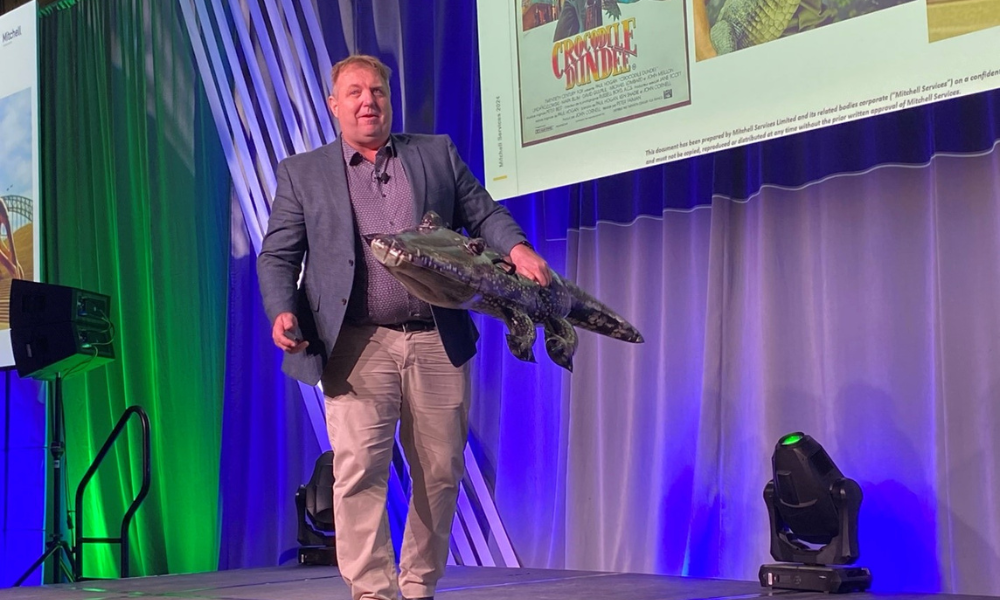'This framework can transform the way we think about and manage safety,' says expert

Making a point about stereotypes in the workplace, Josh Bryant walks across the stage at the Energy Safety Conference in Banff, Alberta holding an inflatable alligator. The Australian is the general manager of people, risk, and sustainability at Mitchell Services, a drilling company based down under, so to speak.
The plain-speaking expert introduced an innovative approach to workplace safety that leverages the Human and Organizational Performance (HOP) theory. His strategy, centered on the "Four Ds" of safety—Dumb, Difficult, Dangerous, and Different—provides a framework for identifying and mitigating workplace hazards in a dynamic and effective manner.
"It's not just about preventing accidents,” explained Bryant, “it's about creating an environment where safety is part of the culture, and everyone is empowered to contribute."

Understanding the four Ds of safety
Bryant described each of the Ds in detail during his talk:
- Dumb: Situations, tasks, or processes that simply don't make sense. Bryant emphasizes the importance of recognizing when a process or task is unnecessarily complicated or illogical, which can lead to inefficiencies or safety risks.
- Difficult: These are the unusual, challenging, or demanding tasks that require more attention and resources to ensure safety. Identifying these allows organizations to allocate resources more effectively and train staff appropriately.
- Dangerous: Clearly risky or hazardous situations that are inherent to certain tasks or environments. Highlighting these helps in focusing efforts on critical areas that need stringent controls and monitoring.
- Different: Changing or newly changed situations, activities, or tasks that may introduce unfamiliar risks. By identifying what is different, teams can adapt more quickly and ensure that changes do not lead to unintended safety issues.
Throughout his presentation, Bryant utilized real-world examples from Mitchell Services to illustrate how applying the four Ds has led to significant safety improvements. "By categorizing hazards and inefficiencies into these four simple categories, we've been able to streamline our processes and focus our safety efforts much more effectively," Bryant explained.
The impact of implementing the four Ds
Bryant shared compelling evidence of the success of this approach, noting, "when we began to categorize and address our workplace challenges through the lens of the four Ds, we saw a measurable decline in incident rates and a significant boost in employee engagement around safety."
He stressed the simplicity of the four Ds allows for quick decision-making and action: "It’s about immediate recognition and response, empowering our employees to call out and address 'Dumb,' 'Difficult,' 'Dangerous,' and 'Different' factors before they lead to accidents."
Call to action for safety professionals
Bryant urged all safety professionals to consider how the four Ds could be integrated into their own safety practices. "Adopting this framework can transform the way we think about and manage safety in our workplaces," he stated.
For organizations looking to enhance their safety protocols, Bryant's implementation of the four Ds of safety offers a clear, adaptable, and proven framework that promises not only to reduce risks but also to foster a proactive safety culture.





